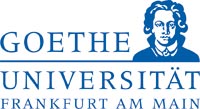Black Holes from an Exacomputer

The challenge in simulating black holes lies in the necessity of solving the complex Einstein system of equations. This can only be done numerically and exploiting the power oi parallel supercomputers. How accurately and how quickly a solution can be approximated depends on the algorithm used.
In this case, the team headed by Professor Luciano Rezzolla from the Institute of Theoretical Physics at the Goethe University and the FIAS achieved a milestone. Over the long term, this theoretical work could expand the experimental possibilities for detecting gravitational waves from other astronomical bodies besides black holes.
The novel numerical method, which employs the ideas of the Russian physicist Galerkin, allows the computation of gravitational waves on supercomputers with very high accuracy and speed.
“Reaching this result, which has been the goal of many groups worldwide for many years, was not easy,” says Prof. Rezzolla. “Although what we accomplished is only a small step toward modelling realistic black holes, we expect our approach to become the paradigm of all future calculations.”
Exascale Computers – as fast as the human brain?
Rezollas team is part of a Europe-wide collaboration with the objective of developing a numerical simulation code for gravitational waves, “ExaHyPE”, that can exploit the power of “exascale” supercomputers. While they have not yet been built, scientists around the world are already studying how to make use of exascale machines.
These supercomputers represent the future evolution of today's “petascale” supercomputers, and are expected to be able to perform as many arithmetic operations per second as there are insects on Earth. This is a number with 18 zeros and it is assumed that such supercomputers will be comparable to the capacity of the human brain.
While they are waiting for the first “exascale” computers to be built, the ExaHyPE scientists are already testing their software at the largest supercomputing centres available in Germany. The biggest ones are those at the Leibniz supercomputing centre LRZ in Munich, and the high-performance computing centre HLRS in Stuttgart. These computers are already constructed with more than 100,000 processors and will become much larger soon.
Simulating tsunamis and earthquakes
Because of the analogies in the underlying equations, the new mathematical algorithms allow the investigation of tsunamis and earthquakes in addition to astrophysical compact objects such as black holes and neutron stars.
Developing the new computer algorithms, which will be able to mathematically describe solids, liquids and gases within the theories of electromagnetism and gravitation, is the goal of the research project funded by the European Commission through the European Union's Horizon 2020 Research and Innovation Programme.
The Frankfurt-based scientists work closely together with colleagues from Munich (Germany), Trento (Italy) and Durham (Great Britain).
“The most exciting aspect of the ExaHyPE project is the unique combination of theoretical physics, applied mathematics and computer science,” says Professor Michael Dumbser, leader of the Applied Mathematics team in Trento. “Only the combination of these three different disciplines allows us to exploit the potential of supercomputers for understanding the complexity of the universe.“
Publication:
Michael Dumbser, Federico Guercilena, Sven Köppel, Luciano Rezzolla, und Olindo Zanotti: Conformal and covariant Z4 formulation of the Einstein equations: Strongly hyperbolic first-order reduction and solution with discontinuous Galerkin schemes. Phys. Rev. D 97, 084053 – Published 30 April 2018
https://journals.aps.org/prd/abstract/10.1103/PhysRevD.97.084053
Further information: Prof. Dr. Luciano Rezzolla, Frankfurt Institute for Theoretical Physics, Faculty of Physics, and Frankfurt Institute for Advanced Studies, Riedberg Campus, Tel. +49 (0) 69 798-47871, rezzolla@fias.uni-frankfurt.de.
ExaHyPE Projekt: http://exahype.eu/
ExaHyPE Project:
http://exahype.eu/
This research was funded by the European Union's Horizon 2020 Research and Innovation Programme under the project ExaHyPE, grant no. 671698 (call FETHPC-1-2014).
Current news about science, teaching, and society in GOETHE-UNI online (www.aktuelles.uni-frankfurt.de)
Goethe University is a research-oriented university in the European financial centre Frankfurt The university was founded in 1914 through private funding, primarily from Jewish sponsors, and has since produced pioneering achievements in the areas of social sciences, sociology and economics, medicine, quantum physics, brain research, and labour law. It gained a unique level of autonomy on 1 January 2008 by returning to its historic roots as a “foundation university”. Today, it is among the top ten in external funding and among the top three largest universities in Germany, with three clusters of excellence in medicine, life sciences and the humanities. Together with the Technical University of Darmstadt and the University of Mainz, it acts as a partner of the inter-state strategic Rhine-Main University Alliance.
Internet: www.uni-frankfurt.de
Publisher: The President of Goethe University Editor: Dr. Anne Hardy, Referee for Science Communication, PR & Communication Department, Theodor-W.-Adorno-Platz 1, 60323 Frankfurt am Main, Tel: (069) 798-13035, Fax: (069) 798-763 12531.
Media Contact
All latest news from the category: Physics and Astronomy
This area deals with the fundamental laws and building blocks of nature and how they interact, the properties and the behavior of matter, and research into space and time and their structures.
innovations-report provides in-depth reports and articles on subjects such as astrophysics, laser technologies, nuclear, quantum, particle and solid-state physics, nanotechnologies, planetary research and findings (Mars, Venus) and developments related to the Hubble Telescope.
Newest articles

Compact LCOS Microdisplay with Fast CMOS Backplane
…for High-Speed Light Modulation. Researchers from the Fraunhofer Institute for Photonic Microsystems IPMS, in collaboration with HOLOEYE Photonics AG, have developed a compact LCOS microdisplay with high refresh rates that…

New perspectives for material detection
CRC MARIE enters third funding period: A major success for terahertz research: Scientists at the University of Duisburg-Essen and the Ruhr University Bochum have been researching mobile material detection since…

CD Laboratory at TU Graz Researches New Semiconductor Materials
Using energy- and resource-saving methods, a research team at the Institute of Inorganic Chemistry at TU Graz aims to produce high-quality doped silicon layers for the electronics and solar industries….



